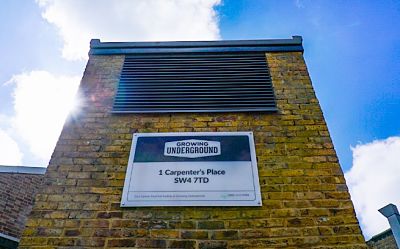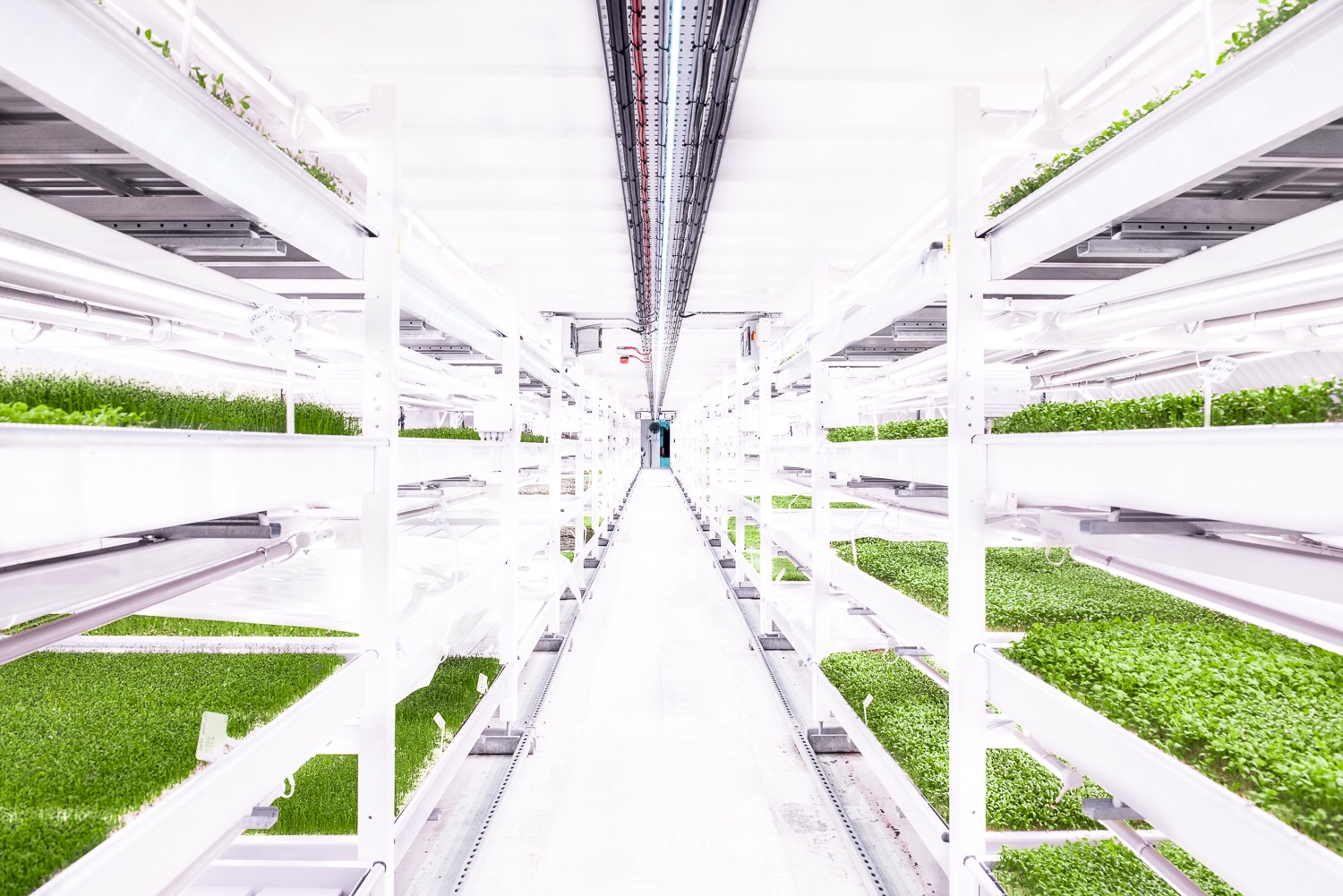
An innovative and award-winning urban farming facility is creating energy-efficient growing conditions in tunnels 120ft below the busy streets of Clapham in London. Micro greens and salad leaves are thriving with the help of a smart monitoring programme that records temperature, humidity and CO2 levels.
Ruchi and her team have really helped us monitor and develop the space which will enable us to eventually get the optimum growing environment.
Richard Ballard Co-Founder of Growing Underground
Growing Underground, which launched in 2015 and is located in former WW2 air-raid shelters, uses hydroponic systems to sustainably produce the pesticide-free crop. The tunnels are leased from Transport for London (TfL), which was happy to see them being put to work having laid dormant for 60 years.
The aim of Growing Underground is to bring edible crop production to the heart of the city while minimising the carbon impact of food transportation. The verdant trays of fennel, garlic chives, pea shoots and coriander, among others, can be picked and on a plate in a restaurant within hours. The forward-thinking company, which sells its greens through Ocado and Marks & Spencer and aims to be carbon neutral, has just been awarded the BBC Future Food Award.
Cambridge Centre for Smart Infrastructure and Construction (CSIC) Co-Investigator Dr Ruchi Choudhary, who leads the Energy Efficient Cities initiative (EECi) at the Department of Engineering, started working with Growing Underground in 2015, following an energy-optimising project completed for the Royal Botanic Gardens, Kew. This retrofit study of the greenhouses at Kew saw the development of a simulation model that incorporated the heat and mass transfer associated with plant transpiration into the dynamic energy simulation of the greenhouse structures.
“The idea was to expand the energy-optimisation project into urban farming and the collaboration with Growing Underground provided the ideal environment,” says Melanie Jans-Singh, an EECi PhD student investigating the integration of urban farming to cities reusing wasted resources. Rebecca Ward, a Research Associate at the EECi, who developed the greenhouse energy simulation at Kew, is also part of the team working with Growing Underground.
In March last year a range of instrumentation, including wireless sensors and web cams that monitor temperature, humidity, CO2, air velocity and light, was installed in a section of the tunnel that is currently being used for growing crops. More sensors were added this summer to help to maintain a constant tunnel temperature of between 20-25C. “There are big spatial variations of temperature in the tunnel but everywhere needs to have the same conditions,” explains Melanie, who has spent the past six months building and calibrating the sensors. “Most sensors need cables. Our sensors are wireless and are designed to cope with the humidity underground.”

There are two tunnels on different levels – in total 65,000 square feet of burrows with the capacity to accommodate up to 8,000 people – and Growing Underground has plans to expand the business next year.
Urban farming is growing rapidly in Japan and South East Asia, where the facilities are referred to as plant factories which are located in dedicated new buildings. “While our focus is urban farming we are looking to repurpose spaces rather than using new buildings, and these could be tunnels or rooftops that are not currently being used,” says Melanie.
Data collected from the instrumentation is informing the heat and mass transfer model of this unique ‘tunnel greenhouse’. “Our monitoring is helping Growing Underground to optimise the yield while reducing energy consumption. If, for example, there is a doubt about how the plants are growing at a certain spot, I can refer to the measurement of air velocity so that we can identify the precise conditions. When the plants are growing better in one area than another, the instrumentation helps us to work out why.”
Real-time monitoring means that conditions can be changed according to the analysed data. Ventilation is the chief energy consumer at the Growing Underground project and monitoring data has enabled adjustments that have cut consumption for ventilation without affecting yield.
The founders of the partially crowd-funded company, Richard Ballard, who discovered the tunnels when he was a film student scouting for locations, and Steven Dring, who has a background in logistics, are able to access the data 24/7. The analysed data itself is of value; it creates a ‘lifetime performance passport’ which provides the asset owners, present and future, with a rich source of information.
"We have been very lucky to partner with the University of Cambridge. Ruchi and her team have really helped us monitor and develop the space which will enable us to eventually get the optimum growing environment,” says Richard. “They have provided us with monthly reports which have allowed us to make adjustments to improve temperature, humidity and air velocity, and now we are working together to improve CO2 levels through enrichment."
The collaboration between business and academia benefits all stakeholders. Growing Underground is providing the case study for further research and the academics are delivering data that will help the crops, and the company, to flourish.
In the longer term the EECi team would like to create a how-to guide to adding a ‘greenhouse’ to a space not previously used for this purpose, identifying the conditions required to turn a space into a greenhouse. “We are using this case study to create a baseline simulation tool for integrating urban farming into unused urban space,” says Melanie. “The second part of my PhD will focus on finding optimal spaces in cities for urban farming. I will look at the whole of London and investigate other typologies of unused spaces within cities for the purpose of urban farming.”

Additional aspects will be introduced to the simulation model with the purpose of optimising energy efficiency. “We will consider how we can integrate co-benefits between plants and buildings. When a building has heating there is a lot of waste heat produced. The waste heat (and perhaps also CO2) can be harnessed for a productive purpose.” Melanie will also look at how urban farming could help to improve air quality, energy use and water use.
“Once we understand the synergies through our simulation model, any city can be considered in this way,” says Melanie.
Rebecca, who built the energy-optimisation simulation model for Kew, is now applying her modelling talents to Growing Underground. The EECi team visit the Growing Underground tunnels once a month to check the instrumentation, report back to Richard and Steven and, occasionally, enjoy the fruits of their labour. “The fresh salad leaves and herbs really are good,” says Melanie. “They’re very tasty.”

